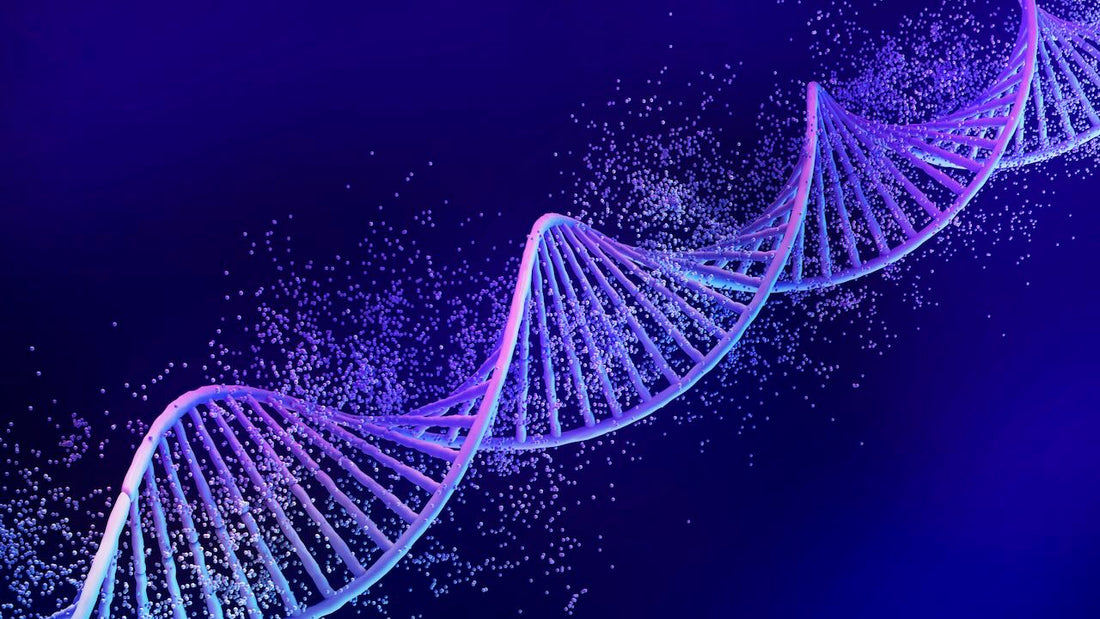
Hallmarks of Aging Explained Simply 12 Key Processes
Share
Aging isn’t just about grey hairs or wrinkles. Inside our bodies, a set of predictable changes quietly unfold. Scientists now call these the “hallmarks of aging”the 12 big processes that gradually wear us down (López-Otín et al., 2023).
Think of your body as a city. For years, the streets are smooth, the power grid hums, and repair crews keep everything running. But over time, cracks show up: potholes spread, power lines fray, the repair crews slow down. Aging, in many ways, is your body’s city growing older.
The Three Buckets of Aging
To make sense of it all, scientists group the hallmarks into three categories. The scientific names are primary, antagonistic, and integrative. But let’s make them easier to remember:
The Starters (Root Causes): These are the sparks that set aging in motion like damaged DNA, worn-down cell ends, or broken recycling systems.
The Over-Reactors (Defenses Gone Wrong): At first, these are the body’s fixes but like firefighters flooding a house to put out a small flame, they can cause more harm than good if left unchecked.
The Big Outcomes (What We Feel as Aging): These are the end results slower healing, tired stem cells, rising inflammation, and changes in the gut that we actually notice in daily life.
Meet the 12 Trouble-Makers
Here are the 12 hallmarks of aging, explained with simple everyday analogies:
The Starters (Root Causes)
Genomic instability: DNA damage like typos in the body’s instruction manual.
Telomere attrition: Telomeres (the “plastic tips” on shoelaces of DNA) shorten, fraying the ends.
Epigenetic alterations: The switches that turn genes on/off get scrambled
Loss of proteostasis: Proteins the workers of the cell become misfolded, like broken tools piling up.
Impaired macroautophagy: The cell’s recycling system (garbage collection) breaks down.
The Over-Reactors (Defenses Gone Wrong)
Deregulated nutrient sensing: Cells misinterpret signals about fuel and growth, like a thermostat stuck on the wrong setting.
Mitochondrial dysfunction: The cell’s power plants sputter, producing less energy and more smoke (oxidative stress).
Cellular senescence: Old “zombie cells” refuse to die, releasing toxic signals.
The Big Outcomes (What We Feel as Aging)
Stem cell exhaustion: The body’s repair crews get fewer and slower.
Altered intercellular communication: Cells stop “talking” clearly, like a city where radios crackle with static.
Chronic inflammation: A constant low-grade fire (sometimes called inflammaging) spreads through tissues.
Dysbiosis: The gut’s community of microbes goes off balance, affecting everything from digestion to immunity.
Why This Matters
The beauty of this framework is that it shows aging is not random decline it’s a set of processes we can map, study, and, in some cases, slow down. Many of these hallmarks are interconnected, meaning if you improve one (say, reducing chronic inflammation), you often improve others too (López-Otín et al., 2023; Frontiers in Cardiovascular Medicine, 2025).
What’s Next in This Series
This blog is the map. In the coming posts, we’ll take each hallmark one by one what it is, why it matters, what you can do about it now, and what therapies are in the pipeline.
Future posts will include: Telomeres (DNA’s shoelace tips) and Cellular Senescence (zombie cells). Stem Cells your body’s tireless repair crews, and what happens when they get tired.Mitochondria, nutrient sensing, inflammation, the microbiome, and more.
References
López-Otín, C., Blasco, M. A., Partridge, L., Serrano, M., & Kroemer, G. (2023). The hallmarks of aging: An expanded framework. Cell, 186(1), 1–23. https://doi.org/10.1016/j.cell.2022.11.017
Frontiers in Cardiovascular Medicine. (2025). The hallmarks of cardiovascular aging: From molecular mechanisms to clinical perspectives. Frontiers in Cardiovascular Medicine, 12, 1631578. https://doi.org/10.3389/fcvm.2025.1631578